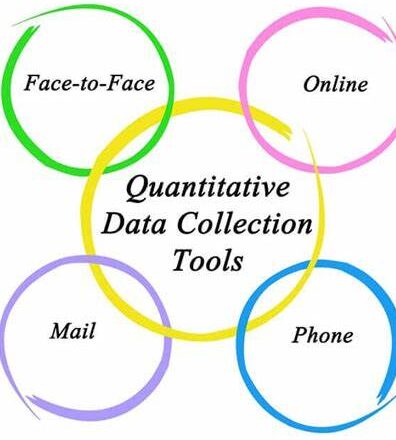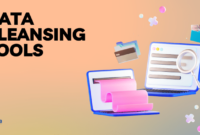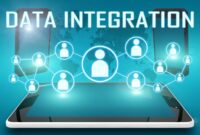Data collection tools play a pivotal role in modern business, research, and decision-making processes. They help organizations gather, store, and analyze information, which is essential for making informed decisions and achieving operational efficiency. With advancements in technology, these tools have evolved significantly, offering automated, accurate, and scalable solutions. In this article, we’ll explore effective data collection tools, their types, benefits, and best practices to ensure your data collection efforts are precise and impactful.
Understanding Data Collection and Its Importance
Data collection involves systematically gathering and measuring information to gain insights, make decisions, and evaluate outcomes. This process is crucial in various fields, including business, healthcare, education, and market research. Selecting effective data collection tools ensures accuracy, reduces errors, and enables organizations to derive actionable insights.
The Role of Effective Data Collection in Business
In business, data collection is a cornerstone of strategies like market analysis, customer segmentation, product development, and more. Tools that streamline data gathering improve productivity and deliver real-time analytics, which are essential for staying competitive.
Types of Data Collection Tools
Choosing the right data collection tools depends on the nature of your data, the methods of collection, and your end objectives. Let’s examine the key types of data collection tools:
Online Survey Tools
Online survey tools like Google Forms, SurveyMonkey, and Typeform are among the most commonly used tools. These tools are versatile, allowing users to design surveys, polls, and questionnaires that can be distributed online. The collected data can be exported for further analysis or visualized within the tool itself.
Mobile Data Collection Apps
Mobile data collection apps are designed for gathering field data efficiently. Apps like KoboToolbox, Fulcrum, and SurveyCTO allow field workers to collect data offline and sync it when connectivity is restored. These apps are particularly beneficial for researchers working in remote locations with limited access to the internet.
Web Scraping Tools
Web scraping tools help organizations extract vast amounts of data from websites for analysis. Tools like Scrapy, Beautiful Soup, and Octoparse automate the process of collecting data from web pages, saving time and minimizing human error.
IoT Devices for Automated Data Collection
IoT (Internet of Things) devices like sensors, RFID tags, and smart devices provide real-time automated data collection. They are widely used in sectors like manufacturing, logistics, healthcare, and agriculture. These devices track various parameters such as temperature, humidity, and inventory levels to streamline processes and increase efficiency.
Data Logging Tools
Data logging tools such as data loggers record data over time using built-in or external sensors. These tools are used in research, environmental monitoring, and engineering applications where precise measurements of physical conditions are essential.
Benefits of Using Effective Data Collection Tools
Choosing the right data collection tools offers numerous advantages, from enhanced accuracy to reduced costs. Let’s delve into the key benefits:
Improved Accuracy and Reliability
Manual data collection is prone to human errors, which can affect the quality of insights. Effective data collection tools help eliminate these errors by automating the process and standardizing input formats. For instance, mobile apps equipped with dropdown menus or checkboxes prevent users from inputting incorrect information.
Time and Cost Efficiency
Automated tools like online survey software and data logging systems reduce the time and effort needed for data gathering. This, in turn, lowers operational costs and allows employees to focus on higher-value tasks.
Real-Time Insights
With advanced data collection tools, you can gather real-time data, which is crucial for making informed decisions promptly. For example, IoT devices used in manufacturing can provide real-time insights into equipment health, allowing proactive maintenance.
Scalable Data Gathering
Tools like web scraping software and cloud-based survey platforms enable organizations to collect vast amounts of data across multiple locations or websites. This scalability is essential for large-scale research projects or market analysis initiatives.
How to Choose the Right Data Collection Tool
Selecting the right data collection tools requires an understanding of your organization’s goals, the nature of the data, and the resources available. Here are some key factors to consider when choosing an effective tool:
Identify Your Data Collection Needs
Start by understanding the type of data you need to collect. For instance, if you are conducting customer satisfaction surveys, an online survey tool with built-in analysis features might be the best choice. On the other hand, if your objective involves collecting field data in remote areas, consider mobile data collection apps with offline capabilities.
Assess Compatibility with Existing Systems
Ensure that the tool you choose can integrate seamlessly with your existing data management and analysis systems. Tools with API integration capabilities offer flexibility in connecting with platforms like Excel, Tableau, or Power BI for deeper analysis.
Evaluate Ease of Use and Training Requirements
Choose tools that are user-friendly and require minimal training. This will reduce onboarding time and increase adoption among team members. Additionally, look for tools with intuitive interfaces and helpful tutorials or customer support services.
Prioritize Data Security and Compliance
With data privacy regulations becoming increasingly stringent, it’s essential to choose data collection tools that comply with regulations like GDPR, HIPAA, and CCPA. Verify that the tool offers encryption and secure storage options to protect sensitive information.
Table: Comparison of Popular Data Collection Tools
| Tool Name | Type | Key Features | Suitable For |
|---|---|---|---|
| Google Forms | Online Survey | Free, easy-to-use, customizable templates | Simple surveys, feedback forms |
| KoboToolbox | Mobile Data Collection | Offline data collection, GPS tracking | Field data in remote locations |
| Scrapy | Web Scraping | Open-source, customizable, fast scraping | Large-scale data extraction |
| Arduino Data Loggers | Data Logging | Sensor integration, real-time monitoring | Environmental and engineering research |
| Fulcrum | Mobile Data Collection | Form building, offline support, cloud sync | Field surveys and inspections |
Best Practices for Effective Data Collection
Implementing the right data collection tools is just the first step; it’s equally important to follow best practices to ensure data accuracy and quality. Here are some recommended best practices:
Define Clear Data Collection Objectives
Start by defining clear and specific objectives for your data collection efforts. This will help you choose the right tools and methods while avoiding unnecessary data points that could complicate analysis.
Standardize Data Entry Formats
Use standardized formats for data entry to minimize discrepancies and maintain consistency. For instance, in online surveys, offer predefined answers like dropdowns, radio buttons, or checkboxes to avoid free-form entries.
Train Your Team on Data Collection Procedures
Regardless of the tools used, proper training is essential to ensure that team members understand how to collect data accurately. Provide training sessions and create clear guidelines for data collection procedures.
Monitor and Review Data Quality
Regularly review collected data for inconsistencies or errors. Implement data validation techniques and use automated checks within data collection tools to maintain accuracy.
Stay Updated with Data Privacy Regulations
As regulations evolve, it’s vital to stay informed about changes that may impact data collection practices. Regularly review your tools and processes to ensure compliance with relevant laws.
Conclusion
Choosing the right data collection tools is crucial for obtaining accurate, reliable, and actionable data. From online survey tools and mobile data collection apps to IoT devices and web scraping tools, each tool serves a unique purpose. By understanding your data needs, selecting the right tools, and following best practices, you can ensure your data collection efforts are effective and valuable for your organization.
For more detailed insights and comparisons of various data collection tools, visit TechTarget’s Guide to Data Collection Tools. It provides a comprehensive overview of tools suitable for different industries and applications.
This comprehensive guide to effective data collection tools highlights various types of tools, their benefits, and the factors to consider when choosing them. By following the provided best practices and staying updated with industry trends, you can enhance the quality and accuracy of your data collection processes.




